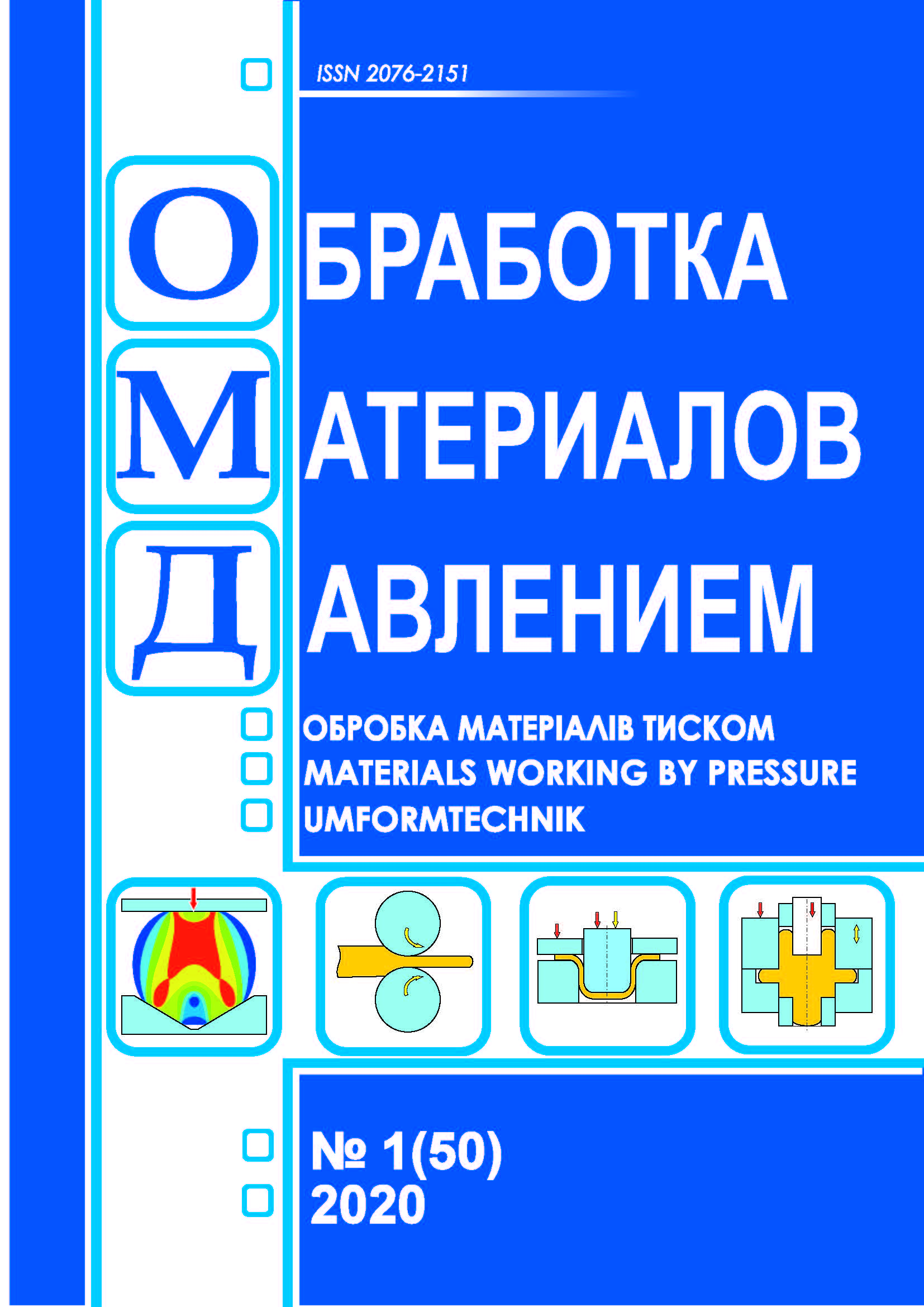Cold drawing with thinning of steel hollow products
DOI:
https://doi.org/10.37142/2076-2151/2020-1(50)50Keywords:
cold stamping, thinning drawing, hollow product, finite element method, temperature distribution, deformation intensity, deformation force, specific forces.Abstract
Kalyuzhny A. V., Kalyuzhny V. L., Kartamishev D. A. Cold drawing with thinning of steel hollow products. Material working by pressure. 2020. № 1 (50). P. 50-56.
The results of modeling by the finite element method of the cold stamping process of a hollow article made of low-carbon steel with intensive processing by plastic deformation of the wall to obtain the necessary mechanical properties are presented. Stamping consists of two stages. A conical cup with protrusions on the bottom from the side of the cavity and on the end is used as an initial blank. At the first stage, a hollow semifinished product with a cylindrical outer surface and a wall of different thickness along the height was obtained by drawing with thinning through three successively arranged matrices. At the second stage, the final shape and dimensions of the product with a flange were obtained by drawing with thinning through one matrix and additional stamping of the bottom part. For the choice of equipment and the design of stamping tools, the dependence of the deformation force of the punch’s movement, the distribution of specific forces on the deforming tool are determined. The processing of the metal structure by cold plastic deformation is estimated by the values of the intensity of deformations and the degree of use of the plastic resource. The degrees of deformation for the implementation of drawing with thinning without destruction in three sequentially located matrices have been established. Temperature distributions are given in deformed metal during drawing at the first stage and at drawing with additional stamping at the second stage. The final shape and dimensions of the product have been determined. By the magnitude of the intensity of deformations and using the experimental diagram of true stresses, the prediction of the yield stress of the deformed metal along the height of the wall and at the point of transition of the wall to the bottom part was performed.

